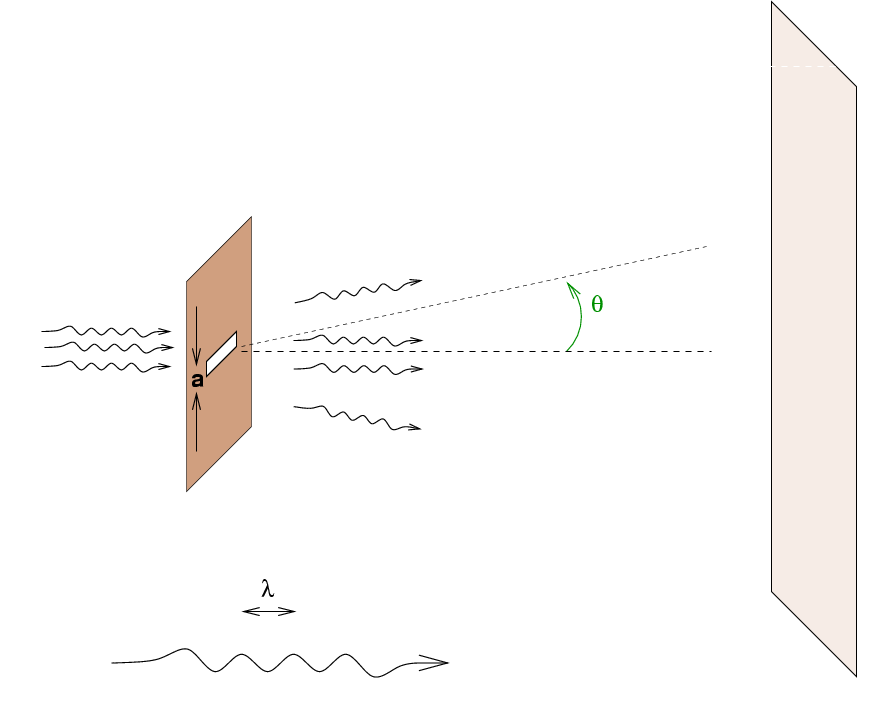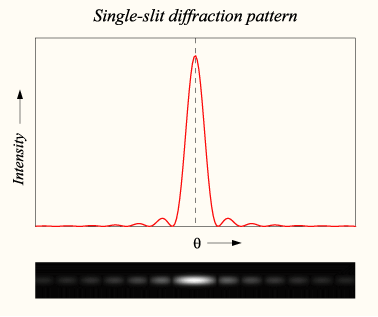
 Copyright © Michael Richmond.
This work is licensed under a Creative Commons License.
Copyright © Michael Richmond.
This work is licensed under a Creative Commons License.
Light can be considered as a collection of waves. The light waves we can see have wavelengths that range between about 400 and 800 nm. Several very interesting (and useful!) properties of light are a consequence of the way that waves combine with each other; the technical term is interference phenomena.
One of these phenomena occurs when light passes through a small opening. A tight bundle of parallel rays entering the opening will spread out after it leaves.

If the opening is in the form a thin slit, then the light rays which pass through it will form a pattern of bright and dark spots, like this:

The pattern is brightest at the center. We can describe this pattern as an intensity (brightness) as a function of the angle away from the central position. This function can be written in the following manner. First, we define an auxiliary variable in terms of the angle theta

and then we use it to compute the intensity at the angle theta like so:

Last modified 3/30/2001 by MWR.
 Copyright © Michael Richmond.
This work is licensed under a Creative Commons License.
Copyright © Michael Richmond.
This work is licensed under a Creative Commons License.